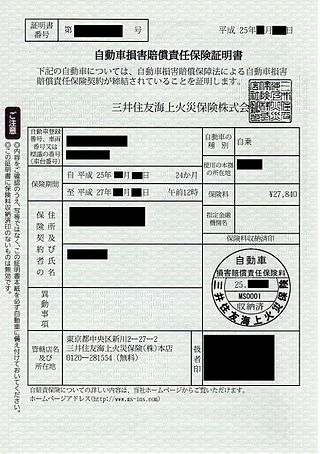Related Research Articles
A class action, also known as a class action lawsuit, class suit, or representative action, is a type of lawsuit where one of the parties is a group of people who are represented collectively by a member or members of that group. The class action originated in the United States and is still predominantly an American phenomenon, but Canada, as well as several European countries with civil law, have made changes in recent years to allow consumer organizations to bring claims on behalf of consumers.
Negligence is a failure to exercise appropriate care expected to be exercised in similar circumstances.
A tort is a civil wrong, other than breach of contract, that causes a claimant to suffer loss or harm, resulting in legal liability for the person who commits the tortious act. Tort law can be contrasted with criminal law, which deals with criminal wrongs that are punishable by the state. While criminal law aims to punish individuals who commit crimes, tort law aims to compensate individuals who suffer harm as a result of the actions of others. Some wrongful acts, such as assault and battery, can result in both a civil lawsuit and a criminal prosecution in countries where the civil and criminal legal systems are separate. Tort law may also be contrasted with contract law, which provides civil remedies after breach of a duty that arises from a contract. Obligations in both tort and criminal law are more fundamental and are imposed regardless of whether the parties have a contract.

Traffic comprises pedestrians, vehicles, ridden or herded animals, trains, and other conveyances that use public ways (roads/sidewalks) for travel and transportation.

An intersection or an at-grade junction is a junction where two or more roads converge, diverge, meet or cross at the same height, as opposed to an interchange, which uses bridges or tunnels to separate different roads. Major intersections are often delineated by gores and may be classified by road segments, traffic controls and lane design.

Vehicle insurance is insurance for cars, trucks, motorcycles, and other road vehicles. Its primary use is to provide financial protection against physical damage or bodily injury resulting from traffic collisions and against liability that could also arise from incidents in a vehicle. Vehicle insurance may additionally offer financial protection against theft of the vehicle, and against damage to the vehicle sustained from events other than traffic collisions, such as vandalism, weather or natural disasters, and damage sustained by colliding with stationary objects. The specific terms of vehicle insurance vary with legal regulations in each region.
Liability insurance is a part of the general insurance system of risk financing to protect the purchaser from the risks of liabilities imposed by lawsuits and similar claims and protects the insured if the purchaser is sued for claims that come within the coverage of the insurance policy.
Where two or more persons are liable in respect of the same liability, in most common law legal systems they may either be:

Personal injury is a legal term for an injury to the body, mind, or emotions, as opposed to an injury to property. In common law jurisdictions the term is most commonly used to refer to a type of tort lawsuit in which the person bringing the suit has suffered harm to their body or mind. Personal injury lawsuits are filed against the person or entity that caused the harm through negligence, gross negligence, reckless conduct, or intentional misconduct, and in some cases on the basis of strict liability. Different jurisdictions describe the damages in different ways, but damages typically include the injured person's medical bills, pain and suffering, and diminished quality of life.

Li v. Yellow Cab Co., 13 Cal.3d 804, 532 P.2d 1226 (1975), commonly referred to simply as Li, is a California Supreme Court case that judicially embraced comparative negligence in California tort law and rejected strict contributory negligence.
Causation is the "causal relationship between the defendant's conduct and end result". In other words, causation provides a means of connecting conduct with a resulting effect, typically an injury. In criminal law, it is defined as the actus reus from which the specific injury or other effect arose and is combined with mens rea to comprise the elements of guilt. Causation only applies where a result has been achieved and therefore is immaterial with regard to inchoate offenses.
A car rental, hire car or car hire agency is a company that rents automobiles for short periods of time to the public, generally ranging from a few hours to a few weeks. It is often organized with numerous local branches, and primarily located near airports or busy city areas and often complemented by a website allowing online reservations.
The family purpose doctrine is "a court-created legal fiction that employs agency principles to impose vicarious liability on a head of the household for the negligent operation of a motor vehicle by a family member." In a typical case involving the doctrine, the so-called "head of the household" has given their family members permission to drive their car "for their general use, pleasure, and convenience," i.e., a "family purpose." Furthermore, plaintiffs in most American courts that follow the doctrine can prove the car was being used for a family purpose "merely by showing that it was being used by a family member with the defendant's consent." The underlying theory of the doctrine is that "the driver of a family car, in pursuit of recreation or pleasure, is engaged in the owner's business and is viewed as either the agent or servant of the owner." In some instances, the doctrine may apply to more than just traditional cars, such as motorbikes, trucks, and motor boats. Moreover, a plaintiff's family purpose doctrine claim does not necessarily fail if "the defendant has provided a separate vehicle for each licensed driver in the family, so that each family member ordinarily operates his or her own vehicle."

Martin v. Herzog, Ct. of App. of N.Y., 228 N Y. 164, 126 N.E. 814 (1920), was a New York Court of Appeals case.

Nettleship v Weston [1971] 2 QB 691 is an English Court of Appeal judgment dealing with the breach of duty in negligence claims. In this case the court had considered the question of the standard of care that should be applied to a learner driver, and whether it should be the same as is expected of an experienced driver.
Atiyah's Accidents, Compensation and the Law (2006) is a legal text, which marked the first of Cambridge University Press's "Law in Context" series. It was originally authored by English legal scholar, Patrick Atiyah in 1970 and has been taken over by Professor Peter Cane since the 4th edition in 1987. The thrust of the book is that the law of tort should be abolished, especially as relates to the law on personal injuries, and should be replaced with a no fault state compensation system. Its arguments are in tune with the establishment in the 1970s of such a system in New Zealand, with the Accident Compensation Commission.
Dillon v. Legg, 68 Cal. 2d 728 (1968), was a case decided by the Supreme Court of California that established the tort of negligent infliction of emotional distress. To date, it is the most persuasive decision of the most persuasive state supreme court in the United States during the latter half of the 20th century: Dillon has been favorably cited and followed by at least twenty reported out-of-state appellate decisions, more than any other California appellate decision in the period from 1940 to 2005. It was also favorably cited by the House of Lords in an important case on nervous shock, McLoughlin v O'Brian [1983].
Pennsylvania v. Mimms, 434 U.S. 106 (1977), is a United States Supreme Court criminal law decision holding that a police officer ordering a person out of a car following a traffic stop and conducting a pat-down to check for weapons did not violate the Fourth Amendment to the United States Constitution.
In legal terminology, the assured clear distance ahead (ACDA) is the distance ahead of any terrestrial locomotive device such as a land vehicle, typically an automobile, or watercraft, within which they should be able to bring the device to a halt. It is one of the most fundamental principles governing ordinary care and the duty of care for all methods of conveyance, and is frequently used to determine if a driver is in proper control and is a nearly universally implicit consideration in vehicular accident liability. The rule is a precautionary trivial burden required to avert the great probable gravity of precious life loss and momentous damage. Satisfying the ACDA rule is necessary but not sufficient to comply with the more generalized basic speed law, and accordingly, it may be used as both a layman's criterion and judicial test for courts to use in determining if a particular speed is negligent, but not to prove it is safe. As a spatial standard of care, it also serves as required explicit and fair notice of prohibited conduct so unsafe speed laws are not void for vagueness. The concept has transcended into accident reconstruction and engineering.
Increases in the use of autonomous car technologies are causing incremental shifts in the responsibility of driving, with the primary motivation of reducing the frequency of traffic collisions. Liability for incidents involving self-driving cars is a developing area of law and policy that will determine who is liable when a car causes physical damage to persons or property. As autonomous cars shift the responsibility of driving from humans to autonomous car technology, there is a need for existing liability laws to evolve to reasonably identify the appropriate remedies for damage and injury. As higher levels of autonomy are commercially introduced, the insurance industry stands to see higher proportions of commercial and product liability lines of business, while the personal automobile insurance line of business shrinks.
References
- ↑ Powell v Moody, Linder Myers Solicitors, 28 September 2011, archived from the original on 27 May 2024, retrieved 20 February 2016
- ↑ APIL Personal Injury: Practice and Precedents. LexisNexis. 2024. Paragraph A2[11].
- ↑ Davis v Schrogin [2006] EWCA Civ 974 (27 June 2006)